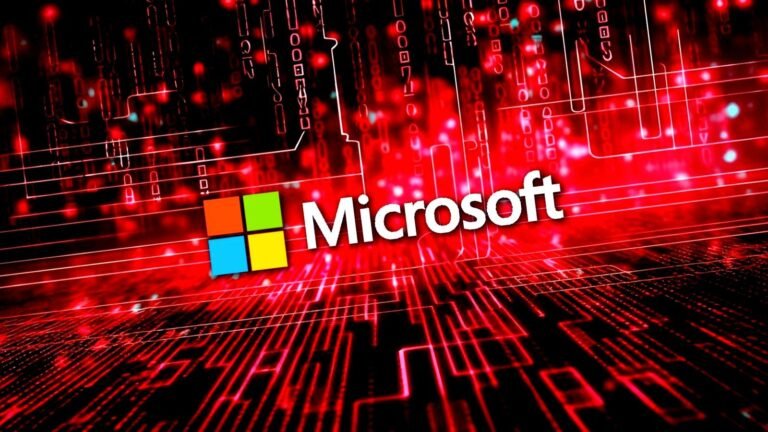Essential Insights
-
Critical Vulnerability: Microsoft warned of a high-severity vulnerability, CVE-2025-53786, in Exchange Server hybrid deployments that allows attackers to escalate privileges in Exchange Online without detection, impacting Exchange Server 2016, 2019, and Subscription Edition.
-
Shared Identity Exploitation: Attackers can abuse the shared service principal identity between on-premises Exchange and Exchange Online to manipulate trusted tokens, as actions from on-prem may not generate malicious behavior logs in Microsoft 365.
-
Risk of Total Domain Compromise: CISA alerted that exploitation of this vulnerability could lead to a total domain compromise, recommending that organizations disconnect public-facing servers running outdated Exchange or SharePoint versions from the internet.
- Historical Context of Exploitation: The advisory highlights a trend of attacks on Exchange vulnerabilities by state-sponsored and financially motivated hackers, referencing previous incidents like ProxyLogon that resulted in significant breaches.
The Issue
Recent advisories from Microsoft have highlighted a critical vulnerability, designated as CVE-2025-53786, within Exchange Server hybrid deployments, specifically affecting versions 2016, 2019, and the Subscription Edition. This vulnerability enables attackers to escalate their privileges undetected in Exchange Online once they gain administrative access to the on-premises Exchange server. Exploiting a shared service principal used for authentication between on-premises and cloud environments, malicious actors can forge trusted tokens. Disturbingly, actions derived from the on-premises side often evade detection within cloud-based auditing systems, creating a landscape where breaches may remain obscured.
The Cybersecurity and Infrastructure Security Agency (CISA) has echoed Microsoft’s warnings, stressing that failure to address this vulnerability could lead to comprehensive domain compromises. CISA’s advisory recommends that organizations bolster their defenses, particularly by isolating legacy servers from the internet to mitigate potential threats. Notably, as cyber adversaries increasingly target vulnerabilities in Exchange systems, echoing past incidents like the ProxyLogon breaches by state-sponsored groups, the imperative for timely updates and proactive security measures cannot be overstated.
Risks Involved
The significant vulnerability identified in Microsoft Exchange hybrid deployments poses substantial risks not only to the affected organizations but also to a broader ecosystem of businesses and users reliant on cloud and on-premises integrations. As attackers leverage this high-severity flaw (CVE-2025-53786) to escalate privileges within connected Exchange Online environments, the ramifications could extend far beyond individual entities; a successful breach may compromise entire domains, leading to a cascade of security failures across organizations that share trust relationships or data. This confluence of potential exploitation, combined with the lack of adequate logging for actions initiated from compromised on-premises servers, severely impairs the ability to conduct effective incident responses and audits. Consequently, businesses operating hybrid systems are placed in a precarious position where an attacker could manipulate shared identities without leaving discernible traces, prompting a domino effect of vulnerabilities that could erode customer trust, disrupt operations, and catalyze financial losses across all sectors linked through cloud services. Thus, a proactive stance in mitigating these vulnerabilities is crucial to safeguard not only the integrity of individual systems but also the collective security posture of the interconnected digital economy.
Possible Actions
Timely remediation is crucial in maintaining the integrity and security of digital infrastructures, particularly when addressing high-severity flaws like the recent warning from Microsoft regarding hybrid Exchange deployments.
Mitigation Steps
- Implement updates promptly
- Conduct vulnerability assessments
- Strengthen access controls
- Employ intrusion detection systems
- Isolate affected systems
- Educate users on phishing
- Backup data regularly
NIST CSF Guidance
The NIST Cybersecurity Framework (CSF) advocates for a proactive approach to risk management, emphasizing the importance of timely updates and continuous monitoring. Refer to NIST Special Publication 800-53 for comprehensive remediation strategies and best practices.
Advance Your Cyber Knowledge
Explore career growth and education via Careers & Learning, or dive into Compliance essentials.
Explore engineering-led approaches to digital security at IEEE Cybersecurity.
Disclaimer: The information provided may not always be accurate or up to date. Please do your own research, as the cybersecurity landscape evolves rapidly. Intended for secondary references purposes only.
Cyberattacks-V1

